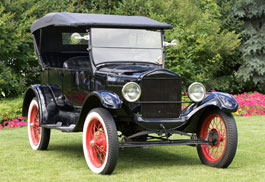Gasoline was initially discarded
Edwin Drake dug the first crude oil well in Pennsylvania in 1859 and distilled the oil to produce kerosene for lighting. Although other petroleum products, including gasoline, were also produced in the distillation process, Drake had no use for the gasoline and other products, so he discarded them. It wasn't until 1892, with the invention of the automobile, that gasoline was recognized as a valuable fuel. By 1920, 9 million vehicles powered by gasoline were on the road, and service stations selling gasoline were opening around the country. Today, gasoline is the fuel for nearly all light-duty vehicles in the United States.
Gasoline octane and lead levels increased over time
By the 1950s, cars were becoming bigger and faster. Gasoline octane increased, and lead was added to improve engine performance.
Leaded gasoline was eventually taken off the U.S. market
Unleaded gasoline was introduced in the 1970s when health problems from lead became apparent. In the United States, leaded gasoline for use in on-road vehicles was completely phased out as of January 1, 1996. Most other countries have also stopped using leaded gasoline in vehicles. Retail gasoline is now usually sold in three grades of gasoline.
Ethanol is added to gasoline
In 2005, the U.S. Congress enacted a Renewable Fuel Standard (RFS) that set minimum requirements for using renewable fuels, including ethanol, in motor fuels. In 2007, the RFS targets were set to rise steadily to 36 billion gallons by 2022. In 2022, about 14 billion gallons of fuel ethanol were added to motor gasoline in the United States. In most areas of the country, retail finished motor gasoline is about 10% fuel ethanol by volume.
Last updated: December 22, 2023.

